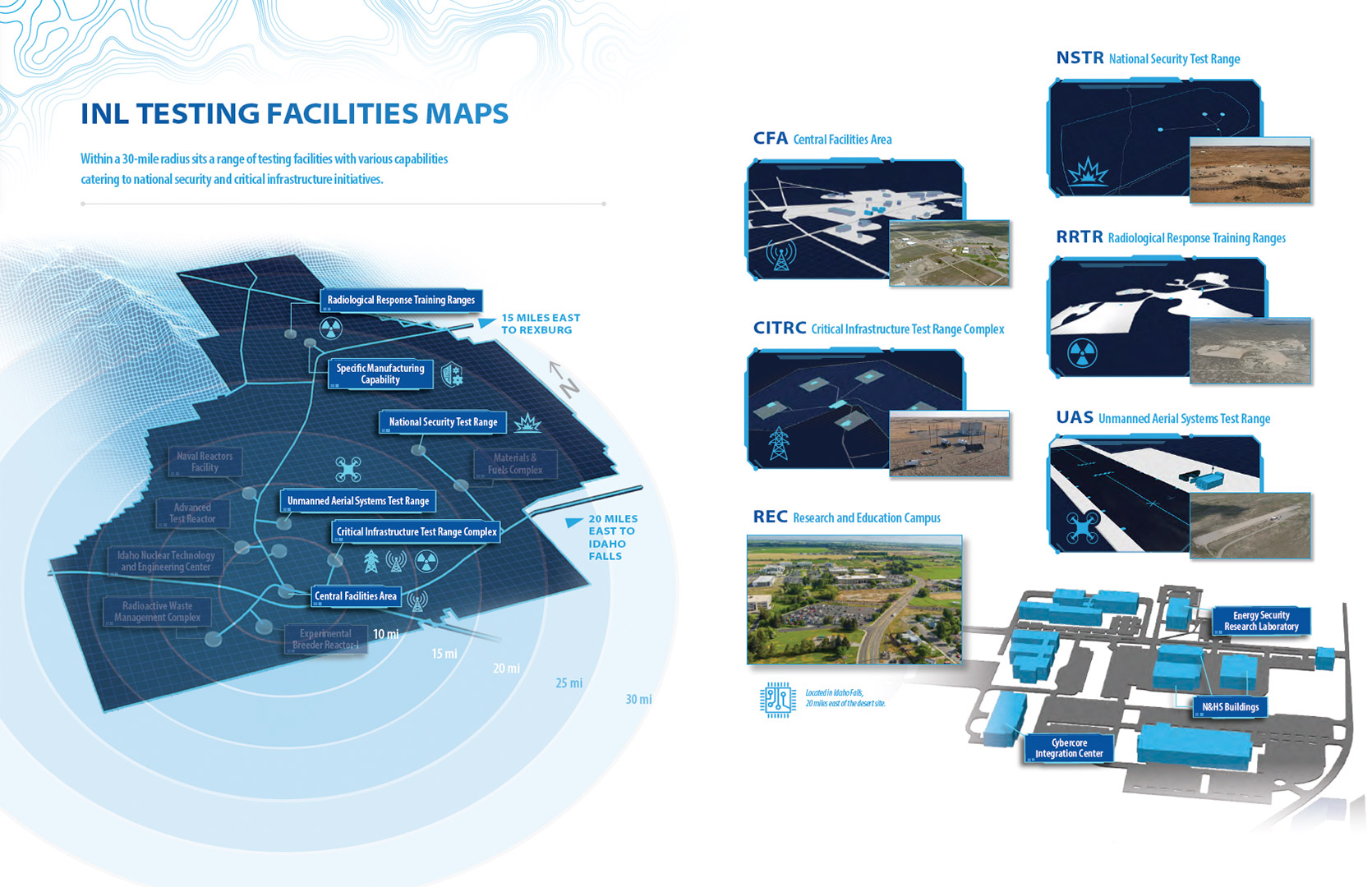
Central Facilities Area
Lorem ipsum dolor sit amet, consectetur adipiscing elit, sed do eiusmod tempor incididunt ut labore et dolore magna aliqua. Ut enim ad minim veniam, quis nostrud exercitation ullamco laboris nisi ut aliquip ex ea commodo consequat. Duis aute irure dolor in reprehenderit in voluptate velit esse cillum dolore eu fugiat nulla pariatur. Excepteur sint occaecat cupidatat non proident, sunt in culpa qui officia deserunt mollit anim id est laborum.
National Security Test Range
The complex consists of eight indoor and outdoor ranges, and tactical training facilities located on 330 acres of isolated, desert-type terrain. The facilities support research and development testing and training and testing of handguns, rifles and heavy weapons such as machine guns, precision rifles, grenade launchers and shoulder-fired, anti-armor weapons. Explosive training and testing, including breaching, is also conducted.
National Security Test Range provides access to capabilities to understand and mitigate emerging challenges being faced on the battlefield.
- 8.7 km range fan
- Classified testing capability
- Tactical breaching training
- Classified networking
- Dynamic testing experience
Critical Infrastructure Test Range Complex
Lorem ipsum dolor sit amet, consectetur adipiscing elit, sed do eiusmod tempor incididunt ut labore et dolore magna aliqua. Ut enim ad minim veniam, quis nostrud exercitation ullamco laboris nisi ut aliquip ex ea commodo consequat. Duis aute irure dolor in reprehenderit in voluptate velit esse cillum dolore eu fugiat nulla pariatur. Excepteur sint occaecat cupidatat non proident, sunt in culpa qui officia deserunt mollit anim id est laborum.
Radiological Response Training Ranges
The laboratory’s 890-square mile site can be used for largescale interagency technology 13-GA50222-03 and capability demonstrations. Students also have access to nuclear facilities including operating reactors, hot cells, and analytical laboratories inside a controlled location that provides a safe and secure environment for training.
- INL has conducted RDD and WMD classroom and field training since 2002.
- Participants have controlled access to live radioactive materials including sealed sources, fissile materials, and spent nuclear fuels.
- INL’s 890-square-mile site, nuclear infrastructure, and staff expertise are ideal for conducting detection, identification, measurement, and recovery exercises.
- The laboratory has provided source material and expertise to agencies wishing to conduct training at their facilities.
- INL’s site has been utilized for several radiological joint capability and technology demonstrations.
Radiological Response Training Ranges
The laboratory’s 890-square mile site can be used for largescale interagency technology 13-GA50222-03 and capability demonstrations. Students also have access to nuclear facilities including operating reactors, hot cells, and analytical laboratories inside a controlled location that provides a safe and secure environment for training.
- INL has conducted RDD and WMD classroom and field training since 2002.
- Participants have controlled access to live radioactive materials including sealed sources, fissile materials, and spent nuclear fuels.
- INL’s 890-square-mile site, nuclear infrastructure, and staff expertise are ideal for conducting detection, identification, measurement, and recovery exercises.
- The laboratory has provided source material and expertise to agencies wishing to conduct training at their facilities.
- INL’s site has been utilized for several radiological joint capability and technology demonstrations.
Unmanned Aerial Systems
With its access-controlled boundary, high-desert terrain and sparse population, INL’s desert site is in a unique position to offer unmanned aerial vehicle and unmanned ground vehicle collaborative operational testing and demonstration. INL’s UAS program focuses on unique applications and missions for a wide variety of customers looking for affordable, field-deployable airframe technologies with meaningful payload and endurance. The lab’s UAS training is designed to ensure that unmanned aerial vehicles are used properly throughout the Department of Energy and its National Nuclear Security Administration. The range also supports implementation of new legislation regarding protection of critical infrastructure.
